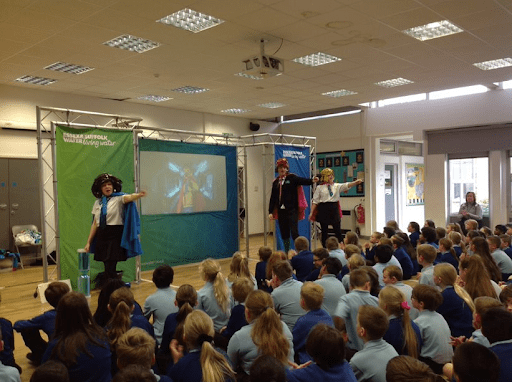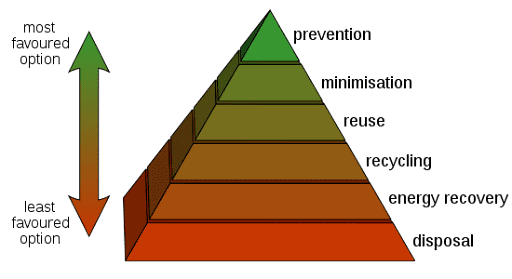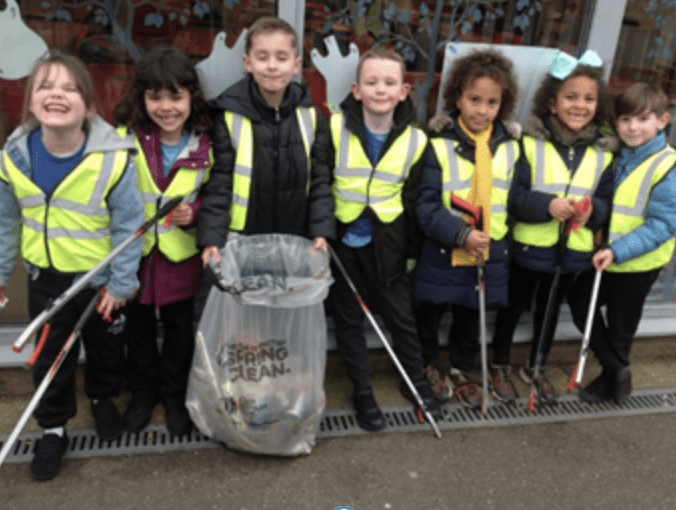Air pollution effects everyone and tackling this problem involves schools working with local communities. A big issue is car idling, particularly outside schools. Car idling produces up to 150 balloons of exhaust emissions per minute containing harmful chemicals like cyanide, Nox and PM2.5.
School Grounds
Utilising and improving your school’s outdoor space for students, staff, plants, animals, and invertebrates is important for any school wishing to be more sustainable and eco-friendly.
There are so many different things you can do and you can start small or undertake a larger project depending on time, cost and resources.
Making the most of your school grounds for learning opportunities is important particularly with the government focus on developing a love of nature as part of their sustainability and climate change strategy for schools. It can be as simple as reading a story outside, going on a bug hunt or playing some team-building games outside. Outdoor Classroom Day happens twice a year in May and November and is a brilliant way of encouraging teachers and students to make the most of being outside. Learning through Landscapes has some great resources for all ages and linking to all curriculum areas as a great starting point. They also provide free grants for early years providers, primary and secondary schools which includes training and your choice of resources and equipment from an extensive list.

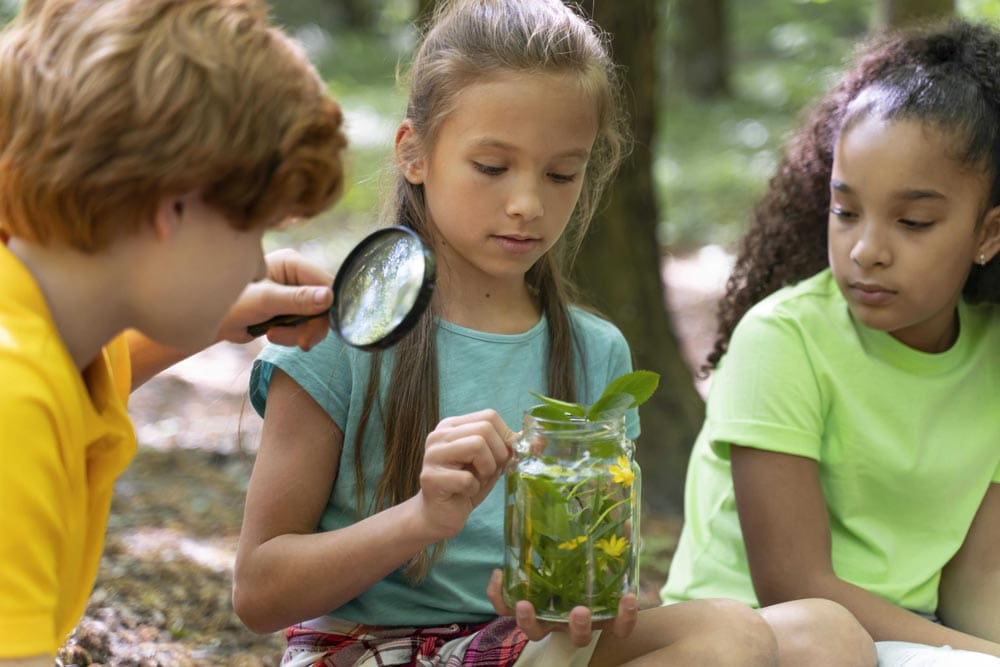
A common project schools like to undertake is setting up a school allotment. Look out for local community groups who could provide your school with free equipment, seeds, plants, expertise and help volunteer their time. It is worthwhile signing up to freebie sites as you may also get seeds and equipment that people are giving away or at a low price. Try to go to your local garden centre and see if they can help you with equipment and plants. If you make it a community project, this will widen your scope your support and resources, but also be great for you Eco-schools green flag application. The RHS has lots of resources for schools including how to link gardening to your curriculum and a school-friendly risk assessment, as well as an annual planner on what to plant and harvest when. You may also like the Grow Veg website and youtube channel which also has online child-friendly planning software to design your school garden and what to grow.
Another popular project is planting wildflowers and trees in your school grounds. The Woodland Trust provide free trees and bushes to schools. You can apply in the Spring for delivery in November or in the Winter for delivery in March. From time to time, different charities and organisations offer free packs of wildflower seeds or bee bombs to schools so it is worth looking out for these. You need a lot of wildflower seeds to create a garden and the ground needs to be rotivated in preparation. You can plant seeds from March/April or October time ready for the Spring or Summer. It is worthwhile approaching community groups or your local council for advice and support from park rangers or local wildlife groups.
There are lots of national days and events your school can take part in to make the most of your school grounds. One example is the RSPB Big Garden Birdwatch which takes place in January each year. Simply count the birds you see in your garden, from your balcony, local park or in your school grounds for one hour. Students can also take part at home or you can incorporate it alongside a visit to a local park or woodland.
Curriculum Links
Science
Understanding how plants grow, how foodchains and ecosystems work and what animals need to survive are all important parts of the Science Curriculum. What better way for children to learn about and understand them than through practical lessons outside throughout the year. By growing your own plants students can observe changes, perhaps keeping a growing diary or carrying out an experiment to see what ideal conditions are. Students could compare the features of different plants and what plants need what conditions to grow.
Whilst gardening and being outside, children will naturally find wildlife and invertebrates which leads to questioning and discussion around pollination, foodchains and foodwebs and ecosystems. Identify bird, insects or wildlife using a taxonomic key, perhaps getting children to create their own. For younger children, you could play a game of bingo to see if children can find all the species in your school grounds or at the local park.
RSHE
Planting and growing your own fruits and vegetables is ample opportunity to link to RSHE, thinking about healthy eating. Spending time outdoors is perfect for mindfulness and mental wellbeing and gardening or outdoor based projects will offer that opportunity to children whether it’s part of a club, a lunchtime activity or during Science lessons.
Maths
If you plan on having an allotment, children can sell produce and manage budgets. If you are planning an enterprise day, this is the perfect business opportunity for children. Measurement of trees and plants is also brilliant for Maths. You could also explore symmetry and shapes outside.
Writing
For writing, you may wish for children to use plants or trees as a stimulus for writing a poem or story, using their senses to describe what they can see, smell or even taste. They could compose a non-chronological report about lifecycles or natural processes they have observed in your school grounds.
Design Technology
There is so much you can do outside – den building, cooking on a firepit, designing and making catapults, woodworking – the possibilities are endless! One project you could undertake is to design and make a bird feeder. There’s lots of options out there including using plastic bottles or old mugs or using seeds. CBeebies or The National Trust have some great ideas.
Art
Create some artwork of local wildlife using natural materials or simply do some observational drawings or what you see outside. You also have the opportunity to create larger pieces of artwork, use textiles, create sculptures or simply practice your sketchbooking skills. Children could take photos of wildlife or things that interest them in nature, which could then form a discussion point or be used to create artwork.
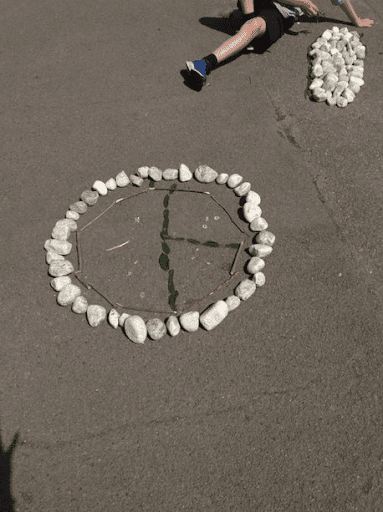
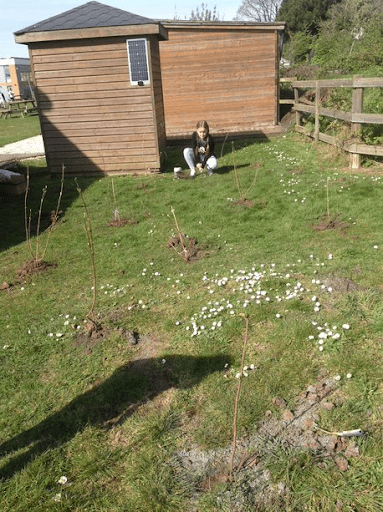
Explore all Schools Resources
Thinking about how we can use water efficiently and sustainably in school and at home is important as clean water is not unlimited. Did you know that on average, each person in the UK uses 150 litres of water a day! Essex and Suffolk Water has some great tips on how to save water and often run educational sessions for schools.
This is a topic which school children can get really involved in as they can see it in their daily lives and can be proactively involved in recycling.
School Grounds Utilising and improving your school’s outdoor space for students, staff, plants, animals, and invertebrates is important for any school wishing …
A global citizen is someone who is aware of and understands the wider world – and their place in it. They are a citizen of the world. They take an active role in their community and work with others to make our planet more peaceful, sustainable and fairer.


